Blog
What is Earth Day?
Read moreAfrican elephants vs. Asian elephants: What’s the difference?

IFAW is a global organisation dedicated to the conservation and protection of vulnerable animals, including elephants. Our Room to Roam initiative in Africa and our Asian Elephant Protection project in China are just two of the ways we are helping wildlife and preserving biodiversity. To learn more about our work or how you can get involved, visit our project pages.
There are three species of elephant:
● Asian elephants (Elephas maximus)
● African savannah elephants (Loxodonta africana)
● African forest elephants (Loxodonta cyclotis)
The African forest elephant was once considered a subspecies of the African savannah elephant. Now, however, scientists categorise them as two separate species, although they have many features in common.
For the purposes of this article, we’ll group both species of African elephant together and compare them to their more distantly related cousin, the Asian elephant.
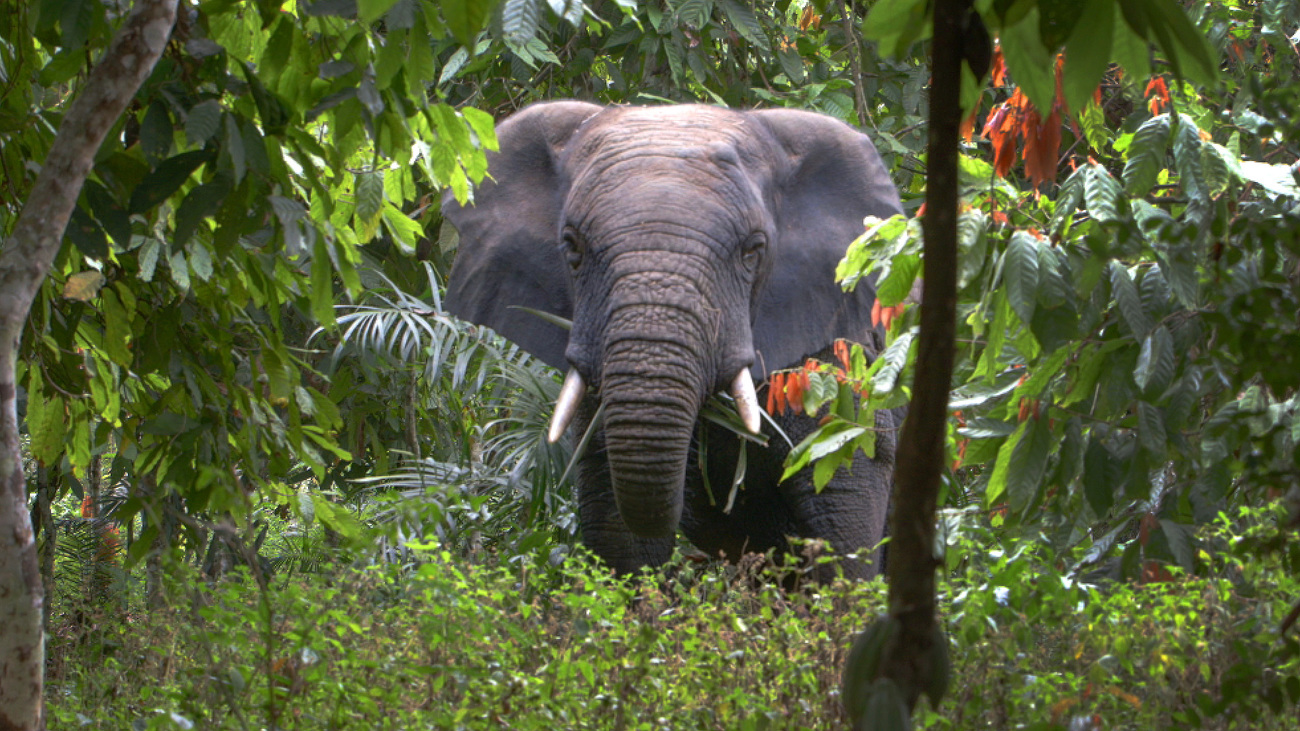
As you could guess from their names, African and Asian elephants live in different parts of the world.
African forest elephants live in dense rainforests in West and Central Africa, while African savannah elephants tend to live in sub-Saharan Africa’s wooded savannahs and grasslands.
The Asian elephant lives in Asia’s forests, swamps, and grasslands in countries including India, Sri Lanka, Thailand, Cambodia, Laos, Vietnam, Myanmar, Malaysia, Indonesia, and China. More than half of all wild Asian elephants are found in India.
The first easily noticeable difference between African and Asian elephants is their ears.
An African elephant’s ears are much larger than an Asian elephant’s ears. They can measure up to 1.8 metres (6 feet) long and 1.2 metres (4 feet) wide.
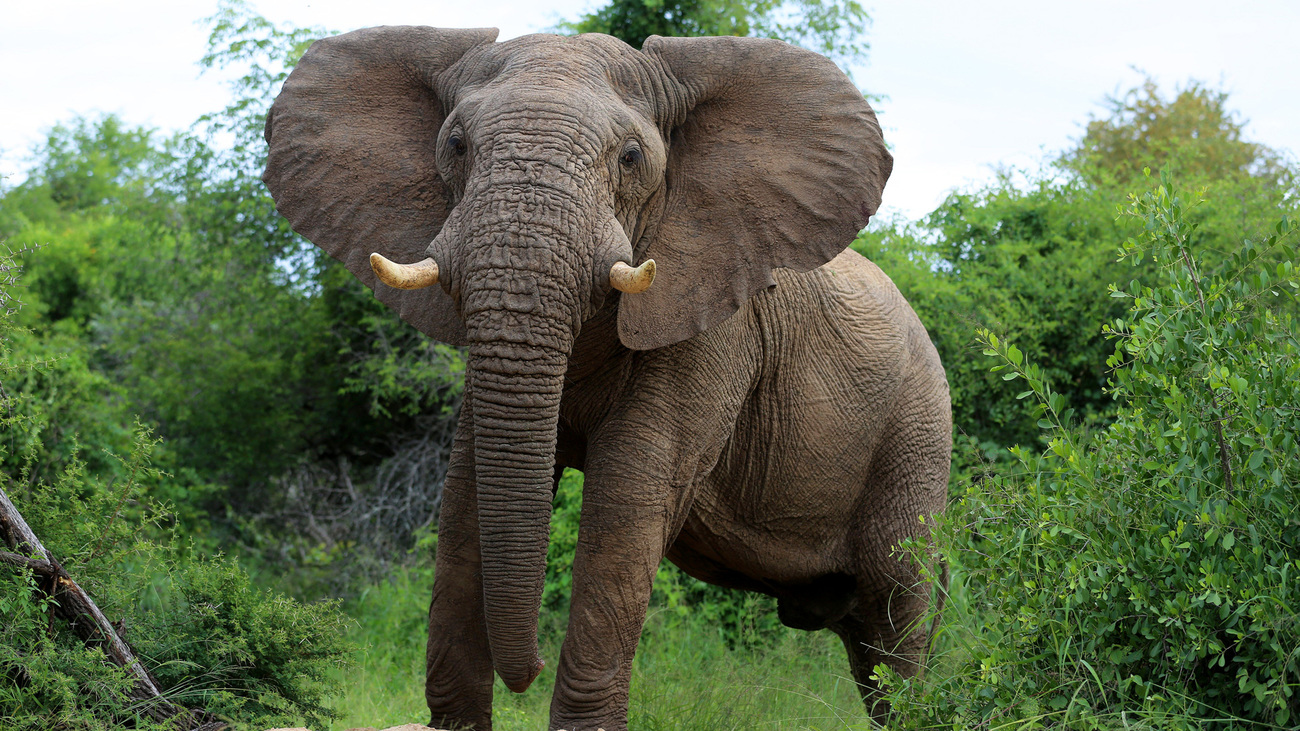
Elephant’s ears are used to dissipate their body heat, so this difference is thought to be due to the climate in which these elephants live. African elephants need bigger ears because they live in warmer climates than Asian elephants.
The shape of their ears is also different. Asian elephants have small, round ears. African elephants have ears that resemble the shape of the continent of Africa.
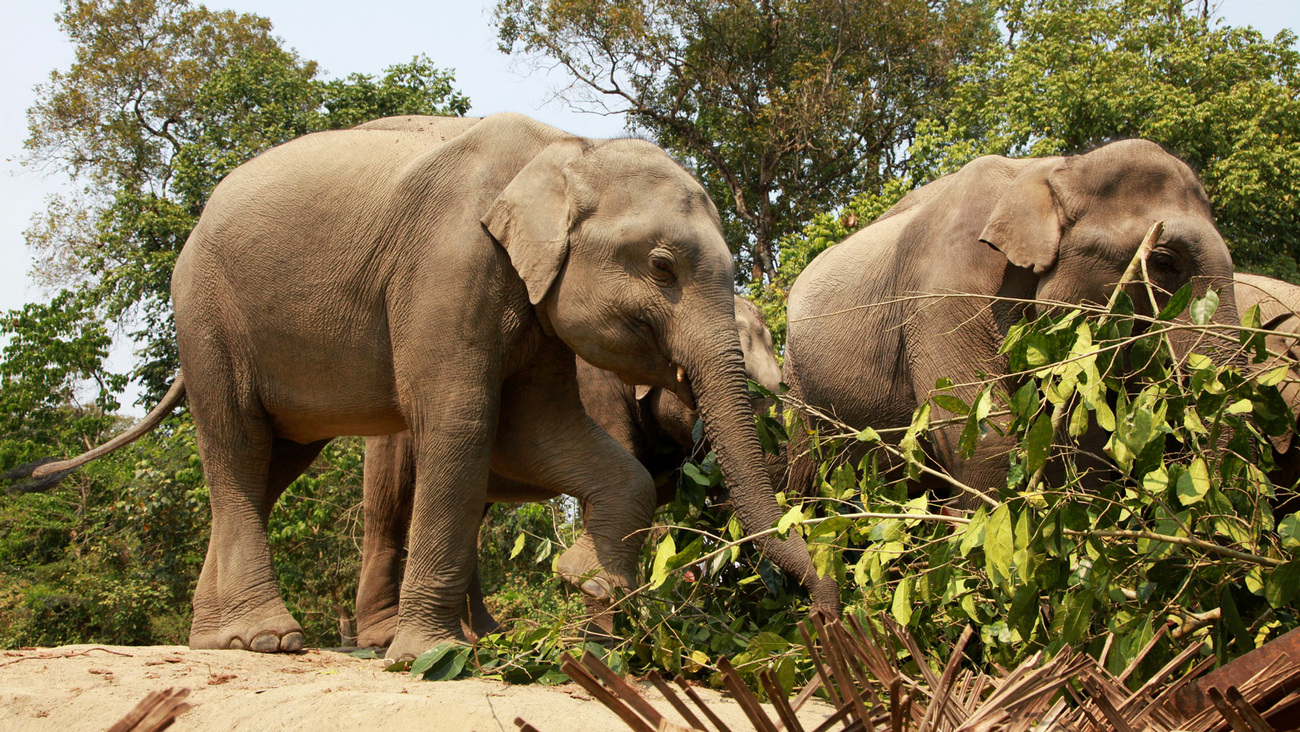
Asian elephants may be the largest land mammals on the Asian continent, but they are smaller than African elephants. This makes African elephants the largest land mammals on Earth.
Asian elephant males weigh on average about 3,600 kilograms (7,900 pounds), with the heaviest reaching up to 6,000 kilograms (13,000 pounds). ( They can measure up to 6.5 metres (21 feet) long and stand up to 3.5 metres (11.5 feet) tall.
While African forest elephants are similar in size to Asian elephants, African savannah elephants are considerably larger. African forest elephants stand about 2.4 to 3.0 metres (eight to 10 feet) tall, and African savannah elephants stand about 3.2 to 4.0 metres (about 11 to 13 feet) tall.
Male African forest elephants weigh 1,800 to 5,400 kilograms (4,000 to 12,000 pounds). Male African savannah elephants can weigh 4,500 to 6,100 kilograms (9,920 to 13,450 pounds).
An African elephant has a rounded head and a concave back that dips slightly in the middle. An Asian elephant has a twin-domed head made up of two humps. Asian elephants also have more rounded backs in comparison to their African cousins.

There are 40,000 muscles in an elephant’s trunk. All elephants use their incredible trunks for breathing, drinking, feeding, grabbing, smelling, trumpeting, and social communication. However, there are two key differences between the trunks of Asian and African elephants.
African elephants have two triangular protrusions at the end of their trunks. These protrusions act as fingers, helping African elephants pinch and pick up objects.
Asian elephants have just one trunk ‘finger’. This is why they tend to grasp objects with their whole trunk, rather than just the tip of their trunk.
African elephants also have more whiskers on the tips of their trunks than Asian elephants. Scientists think that whiskers help the elephants feel objects in their environment, meaning African elephants have a more sensitive trunk than Asian elephants.

Both African and Asian elephants have skin that is dark grey to brown in colour. Asian elephants, however, sometimes have freckles. These are areas of de-pigmentation on the elephant’s face, ears, and trunk. Scientists think they could be caused by genetics, nutrition, and habitat.
African elephants are also known for their wrinkly skin. In comparison, Asian elephants have much smoother skin. Why is this the case?
Scientists have examined the African elephant’s wrinkly skin and found that it retains five to 10 times more water than a smooth surface. This helps to keep the elephant cool in the arid African climate.
Asian elephants tend to live in wetter environments than their African cousins, so they haven’t evolved to have the same wrinkled, water-retaining skin.
Both male and female African elephants grow large, curved tusks. They use their tusks to move objects, gather food, and strip the bark from trees. During droughts, elephants use their tusks to dig and find underground water sources. They also use their tusks for defence.
Asian elephants are a little different. When Asian elephants do grow tusks, they tend to be smaller and straighter than an African elephant’s tusks.
Although both male and female Asian elephants have tusks, in most cases, only the male’s tusks are exposed, while the female’s are covered by the upper lip, which makes them difficult to see. However, there have also been observations in the wild of female Asian elephants with long tusks extending about 30 centimetres (1 foot) out of their mouths.
Despite this historical difference, more and more African elephants are being born without tusks today. Scientists think this is happening in response to ivory poaching. Elephants without tusks are less likely to be hunted and more likely to survive and pass on their genetics.
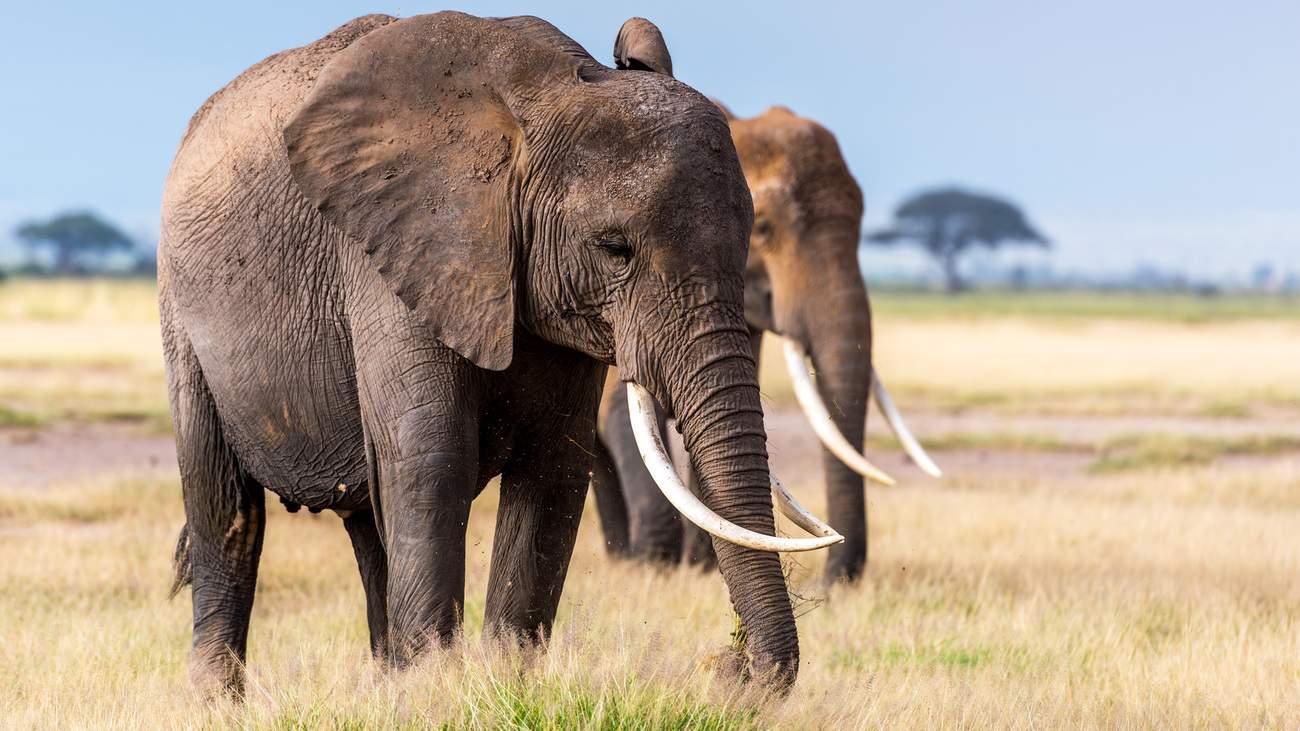
All elephants have similar feet, but there is one big difference. Asian elephants have four toenails on their back feet and five on their front feet. Meanwhile, African elephants have three toenails on their back feet and four on their front feet.
African elephants have close family groups consisting of a matriarch and her offspring. They travel in large herds of up to 70 elephants. African elephants build close bonds within these groups and have a fixed social structure.
Asian elephants have more fluid social structures. They live in groups of between five and 15 related females, which are less hierarchical and more loosely connected. Asian elephant herds can separate and reunite over time.
Both types of elephants communicate using vocalisations, scents, and touch. They make low-pitched rumbling sounds that aren’t audible to humans.
Male African elephants leave the herd when they reach sexual maturity. They then roam alone or travel as part of a bachelor herd.
Asian elephant males also leave their matriarchal herds. However, they don’t tend to form bachelor herds and instead live more solitary lives—but in some regions, it’s not uncommon to see small bachelor groups.
Both Asian and African elephants are herbivores. They eat grasses, tree bark, roots, leaves, and stems. However, there are some differences between their diets.
Asian elephants are more likely to eat palms, grasses, and bamboo, which are more widely available in their natural habitat. They also sometimes eat farmed crops like bananas, rice, and sugarcane.
In contrast, African elephants like to break tree saplings and strip them of their leaves. These leaves are some of their favourite foods. African forest elephants will also eat fruits and seeds.
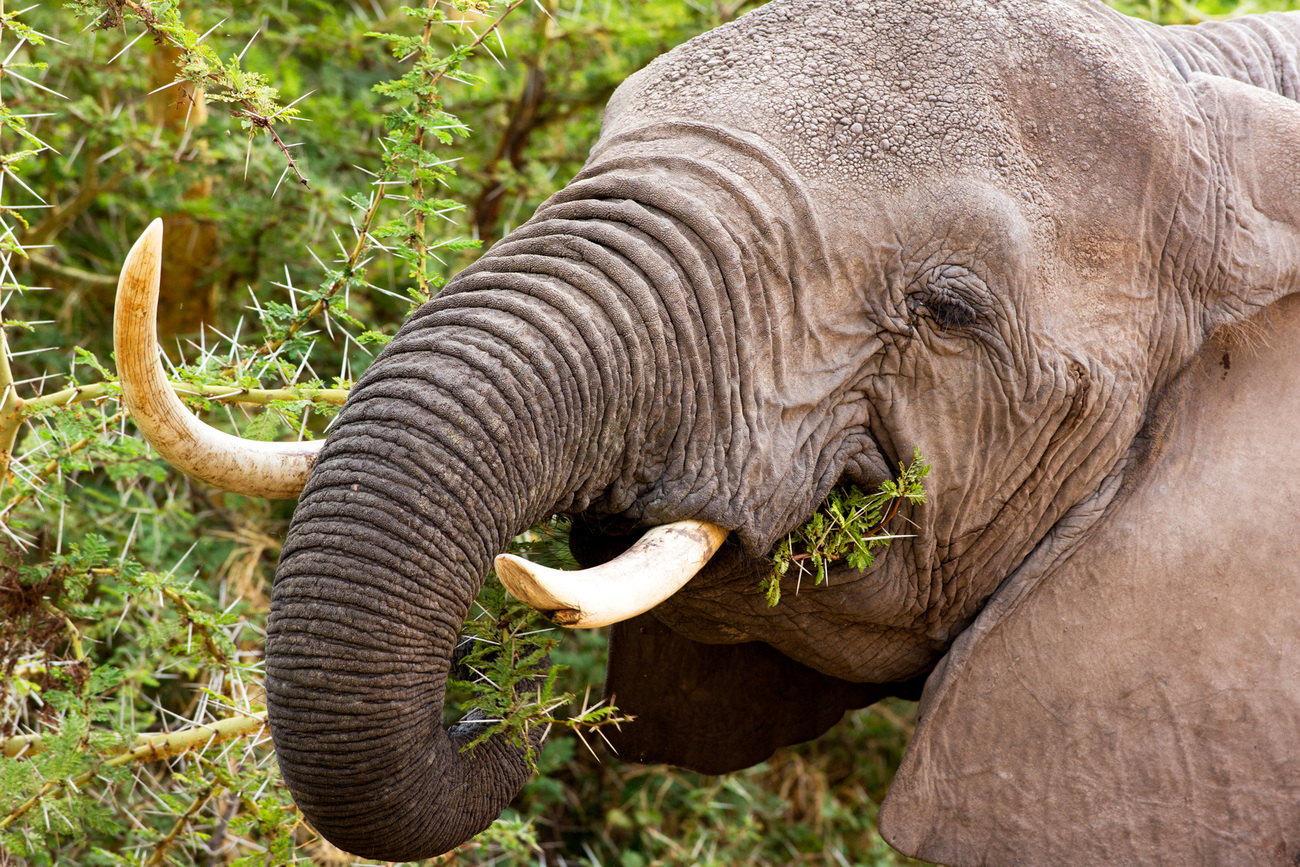
Elephants are at risk from poaching, climate change, and habitat fragmentation. According to the IUCN Red List, Asian elephants and African savannah elephants are endangered. African forest elephants are critically endangered.
At IFAW, we work to protect elephants worldwide. We’re protecting habitats, stopping poachers, and supporting local communities to live more peacefully alongside these majestic creatures.
Through our Room to Roam initiative, we’re reconnecting fragmented African elephant habitats. We’re aiming to secure and connect 10 critical landscapes, each home to more than 10,000 elephants. This will give these animals back the space they need to find food, water, and mates.
In Zimbabwe and Zambia, we’re giving orphaned elephants a new chance at life. Orphaned elephants struggle to find milk and shelter. They also struggle to avoid predators without the protection of their mothers.
To help these young animals, we support two elephant nurseries. At the IFAW-Wild is Life Panda Masuie Release site in Zimbabwe, keepers support the calves until the young elephants join one of the wild herds roaming the 85,000-acre nature reserve.
We also have elephant-focused projects in Asia. In China, we launched the Asian Elephant Protection project, covering Xishuangbanna, Pu’er, and Lincang, the last three remaining Asian elephant habitats in China. This project aims to promote and safeguard human-elephant coexistence.
We supported elephant movement monitoring and a warning system to prevent human-elephant conflict, while conducting scientific research to inform elephant conservation strategies. We launched the Human-Elephant Conflict (HEC) Community Ranger Network, providing training to 94% of the 200 communities in Jinghong, China, with elephant movement, benefitting over 15,000 community members.
We support eco-friendly alternative livelihoods for communities affected by human-elephant conflict, aiming to build a comprehensive community development initiative that combines biodiversity conservation, energy efficiency, carbon reduction, and rural revitalisation.
IFAW’s vital work is only possible with your support. Donate today to protect Asian and African elephants and many other endangered animal species around the world.
Our work can’t get done without you. Please give what you can to help animals thrive.
Unfortunately, the browser you use is outdated and does not allow you to display the site correctly. Please install any of the modern browsers, for example:
Google Chrome Firefox Safari